EASTSIDER-This weekend, I finally took a look at the General Election Voter Information Guide (222 pages), and the Special Municipal Election Voter Information Pamphlet (96 pages). It immediately occurred to me that unless you are a very heavy political junkie, the odds of any voter actually reading the combined 318 pages of information before making a decision as to how to vote is about as likely as Jose Huizar voluntarily resigning his job as Chair of the PLUM Committee.
So I decided to take on the task and report my findings prior to the actual November 8 physical election date. I will give you my analysis of each measure, what it really says, and how I am personally voting and why. Hopefully this will help some voters who go to the polls on Election Day make up their minds as to how they will choose to vote.
Feel free to check this article against your sample ballot, or print and take to the polls. A lot of these issues are literally life and death. Of course, some are horse puckey.
Without further ado, here goes.
LA MUNICIPAL MEASURES
1) HHH - Homelessness Reduction and Prevention, Housing, and Facilities Bond
This one is what it says, sort of. Buried in the seven pages of fine print, the $1.2 billion in bonds are to be funded by an increase in property tax on residents of the City. The funds are to build housing for the homeless.
I have Neighborhood Council friends on both sides of this issue, and it is a passionate debate indeed. My personal take is that, first, the City let the developers throw people out of affordable housing, and now that many of them are on the street, they want us to pay the same developers to build housing for the homeless. Seems nuts, so I’m voting NO.
On the other side, there is no question that homelessness is a serious and growing problem. Whether these bonds would actually have a significant impact on it seems to depend on who you talk to. Your call. This one requires a 2/3 vote to pass.
2) JJJ - Affordable Housing and Labor Standards Related to City Planning, Initiative Ordinance JJJ
This is an Initiative matter, which means that it was put on the ballot by getting enough signatures and bypassing the legislative system. It consists of some 24 pages of very dense language dealing with the building of projects with 10 or more units, and guaranteeing General Plan amendments/zoning changes for projects that meet the detailed criteria of the initiative.
Although its name does not appear on the FOR argument, the initiative was largely sponsored by the LA County Federation of Labor and the Building Trades. You will not be surprised that the Chamber of Commerce is on the NO side.
The good news is that the initiative would restrict the City’s ability to sell us out on General Plan amendments and zoning changes. The flip side is that the cost of building these projects would go up, as they would have to pay “prevailing wage.” It also creates an “Affordable Housing Trust Fund,” and has a lot of details in the text too complicated for my summary.
Again, I have friends on both sides of the issue. Personally, I am going to wait until March of next year for Jill Stewart’s Neighborhood Integrity Initiative, which is a comprehensive and cleaner fix for the City’s planning process. I also find the City CAO’s representation on Fiscal Impact that “this initiative is not expected to result in any additional cost to the City or taxpayers” to be disingenuous puffery.
This measure requires a simple majority vote.
3) Charter Amendment RRR – DWP
This amendment to the LA City Charter would modify the composition and authority of the Department of Water and Power in relationship to the City Council and the Mayor in a whole variety of ways. While the language of the amendment is “only” 11 pages in length, the references and list of ordinances which are mentioned in the ballot language are so indeterminate and unforeseeable as to make a rational judgment impossible.
It is also the one municipal ballot measure that I unhesitatingly recommend a NO vote on. In a recent post to CityWatch indicating “Don’t Even Bother To Read The Ballot Arguments,” the basis for my claim is that I can’t find a single compelling goodie for us the ratepayers in the entire proposal. It does require monthly billing instead of the current bi-monthly system, but that doesn’t change what we pay at all. And I’m a “when in doubt, vote no” kind of guy. This measure requires a simple majority vote.
4) SSS - City of Los Angeles Fire and Police Pensions, Airport Peace Officers
This one is relatively simple. Currently, the Airport police are in the same City pension plan as are most City employees. They want to get into the very sweet (and expensive) Safety Retirement System that the City has for police (LAPD) and Firefighters.
The proposal is that all new hires would automatically go into the LA City Fire and Police Pension fund, and also allows all current LA Airport police to “buy into” the fund. Finally, it would allow “new Airport Police Chiefs who are not already members” to enroll in the LAPD/Firefighter pension plan.
Unlike tax measures, this one can pass by a simple majority vote. However, the fiscal impact to the City is estimated at 14% to 19% more than if the employees were to stay in their current retirement system.
While your mileage may vary, I’m voting NO on SSS. The basis for my vote is that if we the voters want “real” LAPD cops at the Airport, then we should hire LAPD police officers, not allow a pension goodie to folks who, as far as I know, never were, or are, people who have gone through the LAPD’s rigorous hiring and training process.
STATEWIDE GENERAL ELECTION PROPOSITIONS
Wow! Seventeen Propositions in a staggering 222 pages. Are you going to read all of this stuff? I thought not. So here’s my quick and dirty analysis, together with how I’m voting and why.
A lot of these issues are very fundamental and contentious, and the TV ads and printed materials clogging our mailboxes are so deliberately misleading as to give a normal person a migraine -- unless you’ve simply tuned out and thrown the stuff into the wastebasket.
For those who want to ignore my thoughts on these measures, at least be sure to read pages 8 through 16 of the Official Voter Information Guide, which contains simple summaries of each proposition and what a YES or NO vote means.
Proposition 51 - School Bonds
This would authorize the State to issue some $9 billion in bonds for construction and “modernization” of K-12 schools and Community Colleges, including charter schools and vacation education facilities. The total cost over the life of the bonds would be about $17.6 billion dollars.
For me, this one’s simple, at least in Los Angeles. The last time we did this in LA, the LAUSD ran around and built schools that they couldn’t even staff after they were built, because they didn’t have the ongoing budget to staff them. Witness the Sotamayor Learning Academies in Northeast LA. The only thing I know that it did do was launch the career of one Jose Huizar, who was in charge of the building programs for the LAUSD expending the money. Launched his City Council career, it did.
As for the Community College District, don’t get me started. The LACCD Board promised a satellite campus at the Van de Kamps location on Fletcher and San Fernando, and then double-crossed the taxpayers by constructing the facility and then basically giving it away to a Charter school. I think they’re still in litigation on the misappropriation of public funds. I wouldn’t trust them with a dime.
Depending on where you live and what schools your children attend, you mileage may vary.
Proposition 52 - MediCal Hospital Fee Program
This one’s technical. Since 2009, California has imposed a special charge on most private hospitals to (1) cover the state share of increased Medi-Cal payments for hospitals and grants for public hospitals, and (2) generate some state general fund savings. In turn these fees generate a federal Medi-Cal funding match.
Those fees periodically expire, and are set to do so again in January 2018. This measure makes the fees permanent, and has an unknown impact since the federal government must approve any extension of the existing fees. The ringer in this measure is that it excludes hospital fee money from calculating the K-12 education funding level, and puts this exclusion in an amendment to the State Constitution.
My take is that I get nervous when virtually everyone seems to support a proposition, taking into consideration the fact that the legislature has never failed to support these extensions since 2009. And I am simply leery of anything that permanently amends the State Constitution.
While most of my friends are voting in favor of the proposition, I’m voting NO for that reason.
Proposition 53 - Revenue Bonds, Statewide Voter Approval
This proposition is a measure with a specific target -- the Delta Tunnel Project called “WaterFix,” and the High Speed Rail Project. It gets there from here by requiring statewide voter approval before the selling of revenue bonds for any project where (1) the bonds are sold by the state, (2) the bonds are sold for a project that is owned, operated or managed by the state where the bonds exceed more than $2 billion, adjusted annually for inflation.
Of course no one can really say what the impact would be if passed, since no one knows if there will be other projects in the future which would meet these criteria.
The lines are sharply drawn on this one. It’s really an initiative by the Howard Jarvis Taxpayers Association. The opponents are the California League of Water Agencies, the California League of Cities, the Chamber of Commerce, the California Hospital Association and, interestingly, the California Office of Emergency Services.
The main thrust of the opponents is that there is no exemption for emergencies or natural disasters in the measure. They also note that groups of public agencies in different parts of the state often group together into a joint powers entity to fund projects that no one of them could afford alone, and that this proposition would give veto power to voters in different regions to block needed projects for other regions. I’m reading between the lines here that this really means that the rest of the state could veto big joint powers projects for Southern California, for example.
I’m wobbling on this one. I would do almost anything to drive a stake through the heart of the bullet train boondoggle, and the Delta Tunnel project which is designed to bring water to us in Southern California has a lot of legitimate critics. At the same time, it is a historic fact that folks from Northern California have no fondness for Southern California, and I don’t think folks in the San Joaquin valley are exactly fans either.
Proposition 54 - Legislature, Legislation and Proceedings
At last, a simple one. This would expand open meeting requirements to add a requirement that all state bills be posted online and distributed 72 hours before they can be voted on, require audiovisual recordings of all public legislative meetings (to be retained for 20 years,) allow any member of the public to record and distribute recordings of meetings, and make the legislature itself pay for any costs.
The only real argument against the proposition is that it would give special interests more time to lobby. C’mon. Special interests already own Sacramento. I just love this one because it should make the tiny little hearts of our City Council tremble at what might overtake them in the future. I’m voting YES.
Proposition 55 - Tax Extension to Fund Education and Healthcare
This is the extension on what’s commonly referred to as the special tax on high income people, for a period of 12 more years. High income earners are defined as $250,000 for single, $500,000 for joint, $340,000 for heads of household.
Normally this would be a no brainer for most of us, in the spirit of getting back at the 1%, and I’m leaning towards a YES vote. The drawback is this: Governor Brown promised that this was going to be a one-time deal back in 2012 and would expire in 2018. Just a temporary fix.
Such an extension has a significant downside in that state revenues are already very robust – it’s starting to look like a permanent tax increase. The danger is that the state will become addicted to these additional revenues, and the second that there is a downturn in the economy, all the happy feel-good projects that this funds will come to a crashing halt. It is not good budgetary practice to construct budgets on temporary revenues, period. Your mileage may vary.
Proposition 56 -Cigarette Tax to Fund Tobacco User Prevention, Research, and Law Enforcement
This measure would increase the tax on cigarettes by $2 a pack, the tax on other tobacco products by $2 per pack equivalent, and add a new tax on e-cigarettes of $3.37 per pack equivalent. The proposition also amends the State Constitution to exempt these taxes from the state’s constitutional spending limits, and further exempts these revenues from school funding requirements.
The devil, as it were, is in the details of who gets the money. From the Legislative Analyst, here are the entities: the State Board of Equalization, various state agencies for enforcement, University of California (physician training), Department of Public Health (State Dental Program), California State Auditor, Medi-Cal, Tobacco Control Program, University of California (tobacco related disease program), and school programs. The slicing and dicing is built into the legislation.
For me, what tips the scales is the new inclusion of e-cigarettes being taxed as a tobacco product. I’m voting YES, although I can understand the opposition’s argument that little of the money goes to actually stopping people from smoking.
Proposition 57 - Criminal Sentences, Parole, Juvenile Criminal Proceedings and Sentencing
This is another contentious proposition. Clearly the proposal is designed to amend the State Constitution to decrease our prison population by increasing the number of inmates eligible for parole and adding a set of sentencing credits. It also would require that juvenile offenders first have a juvenile court hearing before their case can be transferred to adult court.
The crux of the dispute is in what qualifies as a “nonviolent felony” offense. Readers will remember the aftershocks of 2014’s Proposition 47 which made changes to allow “nonviolent, non-serious property and drug crime” offenders to have their felonies reduced to misdemeanor, and get released from prison. That proposition, and its fallout, are still the subject of a very divisive debate among Angelenos, who saw a significant increase in released offenders in our neighborhoods.
The law enforcement community is unanimous in their opposition to Proposition 57, as they were to Proposition 47. My friend Caroline Aguirre in Northeast LA, a retired state parole officer, is relentless in discussing her exposure to the atrocities committed by a number of people released under Prop 47. She has a point, and her articles are always factually accurate as to crimes committed by Prop 47 released offenders.
The flip side of the question has to do with too many people in jail and increasing judicial intervention because of prison overcrowding. The short answer is that we can’t have it both ways with huge prison populations that are not adequately housed and cared for (read big bucks), versus crimes that may be committed by those who are released.
Most of my friends will vote NO on this proposition. I’m voting YES because the increased number of people released into our communities will hopefully force us as a society to bite the bullet and either pay a bunch more money to fund the criminal justice and prison system, or deal with the aftermath of people released who have a snowball’s chance of ever getting a job with their record and skills.
Proposition 58 - English Proficiency, Multilingual Education
We used to call this one bilingual education and it seemed to work okay until proposition 227 (1998) came along and said that education had to be done in English. This measure would basically allow schools to go back to the old system. Schools would also have to talk with their communities about developing “language acquisition” programs and preserve the right of parents to have their children learn English by being taught in nearly all English.
I could be wrong, but my educator friends seemed to like the old system and thought it worked well for Los Angeles. Don’t know about the rest of the world. Having said that, I do remember that this was a serious hot button issue for the body politic and the rhetoric was hot and heavy. Particularly outside of Los Angeles. We’ll see if 18 years has made a difference in attitudes. I’m voting YES.
Proposition 59 - Corporations, Political Spending, Federal Constitutional Protections
This proposition is specifically designed to reverse the Supreme Court’s decision in Citizens United by way of a constitutional amendment. That decision said that “independent expenditures” of money in politics was “free speech.” I call it the “one dollar one vote” decision.
The measure urges congress to initiate an amendment to the US Constitution clearly stating that corporations do not have the same constitutional rights as human beings.
The measure is essentially “snow in the wintertime,” since it doesn’t here, and California cannot pass an amendment to the U.S. Constitution or force Congress to do so. It’s a feel good free vote, so whatever floats your boat.
Proposition 60 - Adult Films, Condoms, Health Requirements
This is a weird one. CAL/OSHA already regulates condom use in the adult film industry, and in Los Angeles County, we have Measure B (2012) that requires condom use in the adult film industry. This measure would set up an entire regulatory and enforcement bureaucracy to license, regulate, and enforce use of condoms in the industry.
Since I don’t know anyone in the industry, I’m not sure to what extent there’s a pressing necessity for the proposition, and I am extremely leery of setting up any additional state bureaucracies. Even though the proponents finesse the issue, the Legislative Analysts’ Office estimates it would result in lost revenues and costs of around $1 million a year to implement. I’m voting NO, but without enthusiasm.
Proposition 61 - State Prescription Drug Purchases, Pricing Standards
Prohibits state agencies from buying any prescription drug from a drug manufacturer at any price over the lowest price paid for the same drug by the US Department of Veterans Affairs. Medi-Cal managed care programs are exempted.
That’s it. And the measure has generated zillions of dollars in print and TV ads, to the point where I got a headache from just watching the ads. Underneath, however, the stakes are clear. If you look at the fine print in all the TV ads by some veterans groups and others, the fine print says, “major funding by Merck & Pfizer.” That should tell you everything -- and they are spending millions of dollars. Big Pharma does not do that unless they have something to fear.
Between this fact and Bernie Sanders’ ad publically endorsing the proposition, for me it’s a no-brainer. YES on 61. We won’t know how much money we can save unless we give it a whirl, and the VA in general keeps pretty tight controls on drug costs.
Proposition 62 - Death Penalty
The title says it all. The proposition does three things: (1) repeals the death penalty in California in favor of life without parole, (2) applies retroactively to everyone already sentenced to death, and (3) states that murderers sentenced to life without parole must work while in prison, with a portion of their wages going to victim restitution.
I should state that I’m a cost/benefit kind of guy, and the issue to me seems one of cost and chances of actually killing these folks vs. the “benefit” of executing them. There are about 750 death sentence prisoners in California at the moment with their legal appeals somewhere in the labyrinth appeals process. Further, since 2006, no one has been executed because of legal issues over our state’s lethal injection procedures.
The most vocal proponents of keeping the death penalty are prosecutors, law enforcement, and corrections officers. Honestly, as ghoulish as it may sound, I think that for them it’s about jobs and budget. At least, I am unaware of any validated study that demonstrates that the death penalty is in fact a deterrent.
If vengeance and retribution are more important than money, and I know that this is true for a lot of people, vote YES. I think we have better uses for our economic resources within the criminal justice system and am therefore voting NO.
Proposition 63 - Firearms, Ammunition Sales
This measure has some common sense stuff in it like prohibiting certain individuals from possessing firearms.
Most of Prop 63, however, was already addressed by the legislature this year. For example, folks who sell ammo will have to obtain a license from the Department of Justice, and anyone who messes up three times will have their license permanently revoked. Also, ammo dealers already have to check with the Department of Justice and give personal information on the individual wanting to purchase ammunition. That information goes into a DOJ database, and there is a fine to the individual and/or imprisonment for failure to comply with the regulations.
The proposition would add to these existing laws by requiring you and I to undergo a background check to even buy ammunition and pass a DOJ authorization in advance.
You also would not be able to bring any ammunition in from out of state. Further, you and I would have to pay $50 to the DOJ to even get a 4-year permit to buy ammunition at all.
At some point, this government intervention in our lives gets scary. I’m fine with ensuring that people who should not be able to buy weapons can’t do so. Ditto for background checks. But when you start going so far to hobble citizens from even being able to buy ammunition for their firearms, I’m out. All these regulations that you and I will have to go through to even buy a .22 caliber bullet are over the top. All these licenses, all these permits, all these checks, are going directly into databases that will be linked to all law enforcement, homeland security, the NSA, and big brother in the sky. I’m doubling up on my contributions to the EFF (Electronic Freedom Foundation).
This is just bogus. I’m voting no, and if you value your privacy, you should too.
Proposition 64 - Marijuana Legalization
Pretty much as the title indicates, Prop 64 legalizes the use of marijuana by adults over 21 years of age, and provides for licensing, sale and taxation thereof.
Most of the pushback against the measure comes, unsurprisingly, from the vested interests who have a stake in keeping pot illegal -- law enforcement, and the federal government. For them, it’s about jobs and budget, just like the death penalty.
Last I checked, people are going to buy and imbibe pot whether or not it’s legal, and if I remember right, marijuana is the largest chunk of the economy of Humboldt County and a host of other places in California.
I personally believe that limited law enforcement resources are better deployed dealing with their core functions. I’m voting YES, even though I do not personally drink or use at all.
Proposition 65 - Carryout Bags, Charges
Proposition 67 - Ban on Single Use Plastic Bags
Prop 65 ties directly in with Prop 67, so I will treat them together, even though they are out of order. Prop 67 flatly bans the use of single use plastic or paper bags. Those are the ones that are only sturdy enough to be used once, unlike the thick SuperA bags and sturdy paper bags with handles.
As near as I can figure, the idea is that if both measures pass, we will have to pay for the thicker bags and the money will for “environmental programs.” What happens is, if Prop 65 passes, and so does Prop 67 (with more votes than Prop 65,) the stores get to keep the revenue. Otherwise the money goes to the state for environmental programs.
There’s an alternate scenario for what happens if Prop 65 fails, but my eyes glazed over. Only lawyers could write this stuff. I’m voting NO on all of it.
Proposition 66 - Death Penalty, Procedures
Finally, we come to the second death penalty proposition. It is relatively straightforward in that it is specifically designed to “fast-track” death penalty cases. The less straightforward part has to do with dancing around what method of execution the state can use, and it indemnifies health care professionals from participating in an execution.
Even the law enforcement community is split on this one. My take is that lovers of the show Law and Order will like it as a great threat to use in interrogation. For the rest of us, your mileage will vary. There are enough innocent people who have been executed under our current legal system that I am loath to do anything that will speed up the appeals process and produce more innocent inmates who get executed. We can’t fix it when someone is dead. Voting NO.
(Tony Butka is an Eastside community activist, who has served on a neighborhood council, has a background in government and is a contributor to CityWatch.) Edited for CityWatch by Linda Abrams.)
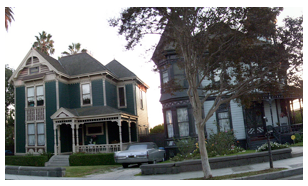 And earlier in the summer the group Defend Boyle Heights demanded that "all art galleries in Boyle Heights ... leave immediately." Anti-gentrification activists say the galleries, new restaurants and new housing serve as tools to displace Boyle Heights residents who, in a market where median rents exceed median income, will have nowhere else to go.
And earlier in the summer the group Defend Boyle Heights demanded that "all art galleries in Boyle Heights ... leave immediately." Anti-gentrification activists say the galleries, new restaurants and new housing serve as tools to displace Boyle Heights residents who, in a market where median rents exceed median income, will have nowhere else to go. 
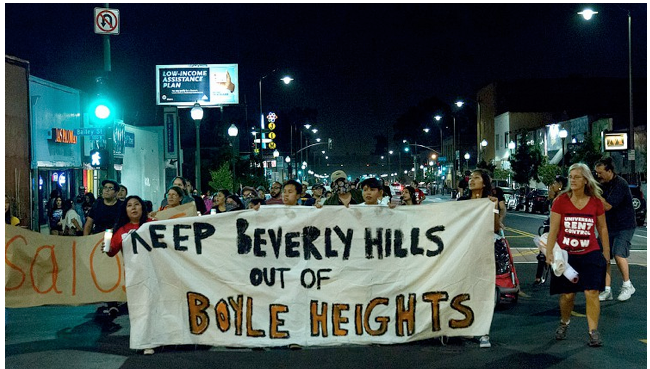

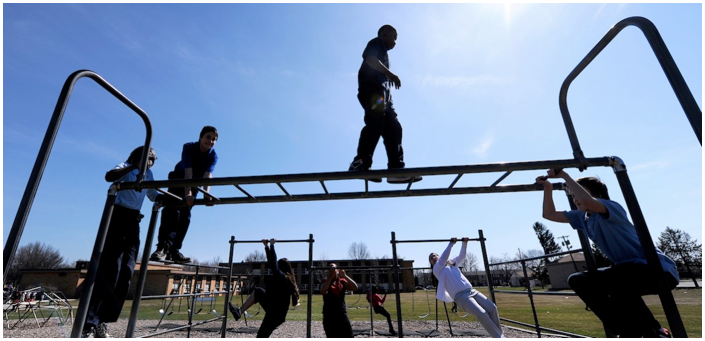
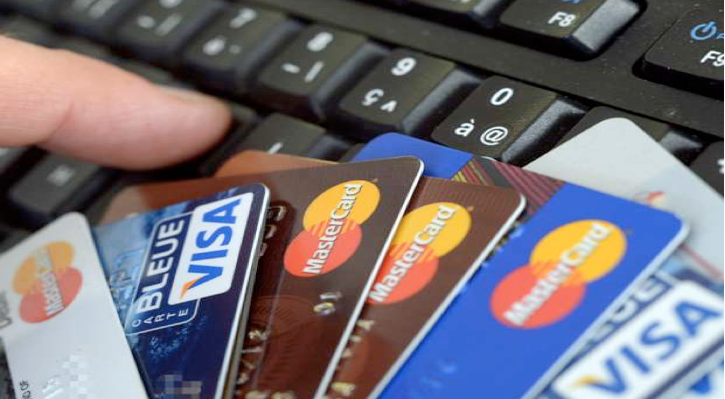
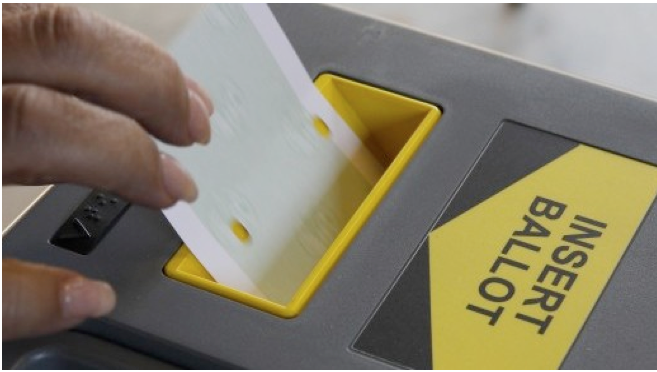
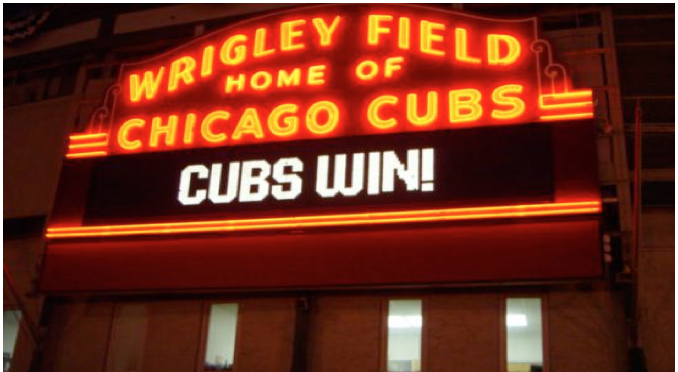
 It looked like the Cubs of old had returned. And then they had to go and destroy a tradition older than the 20th century (which, after all, was only given 100 years), a tradition that went back to monarchial rule over Europe and Asia, wooden airplanes, Giacomo Puccini, and Billy Goat's curse. All lost to history now. About all we've got left is Halley's Comet, and it's not due till the 2060s.
It looked like the Cubs of old had returned. And then they had to go and destroy a tradition older than the 20th century (which, after all, was only given 100 years), a tradition that went back to monarchial rule over Europe and Asia, wooden airplanes, Giacomo Puccini, and Billy Goat's curse. All lost to history now. About all we've got left is Halley's Comet, and it's not due till the 2060s. 
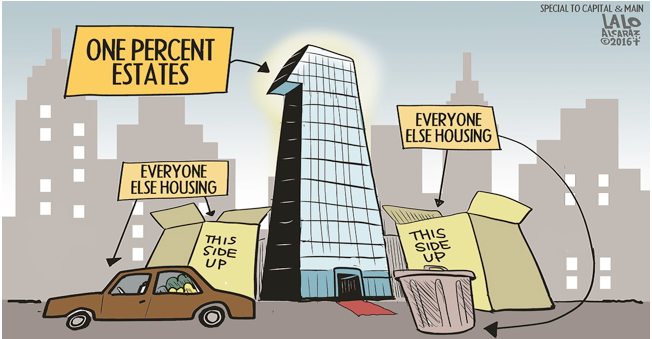
 These supporters are, in my view, extremely well intentioned people. But, I nevertheless think they are mistaken. They have reached a point of total desperation because the government programs they once relied upon to build affordable housing ended up on the public policy scrap heap. So, without any other obvious alternatives, they are hoping against hope that JJJ, despite its crippling loopholes, will miraculously work. It will overcome the odds to build a modicum of affordable units by piggy-backing them on spot-zoned luxury projects, or it will recharge LA’s empty Affordable Housing Trust Fund through in-lieu payments.
These supporters are, in my view, extremely well intentioned people. But, I nevertheless think they are mistaken. They have reached a point of total desperation because the government programs they once relied upon to build affordable housing ended up on the public policy scrap heap. So, without any other obvious alternatives, they are hoping against hope that JJJ, despite its crippling loopholes, will miraculously work. It will overcome the odds to build a modicum of affordable units by piggy-backing them on spot-zoned luxury projects, or it will recharge LA’s empty Affordable Housing Trust Fund through in-lieu payments. 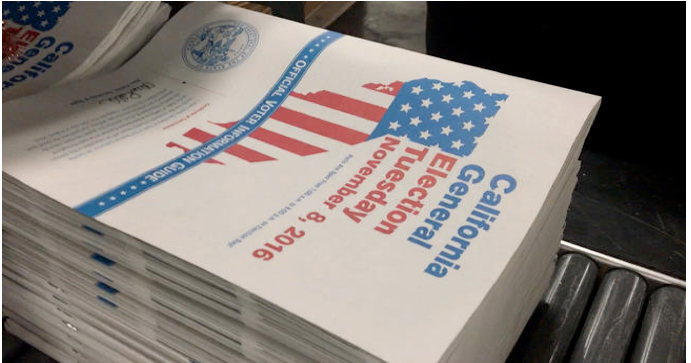
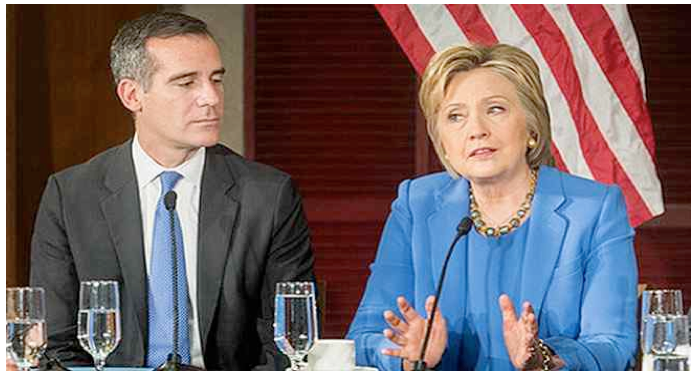
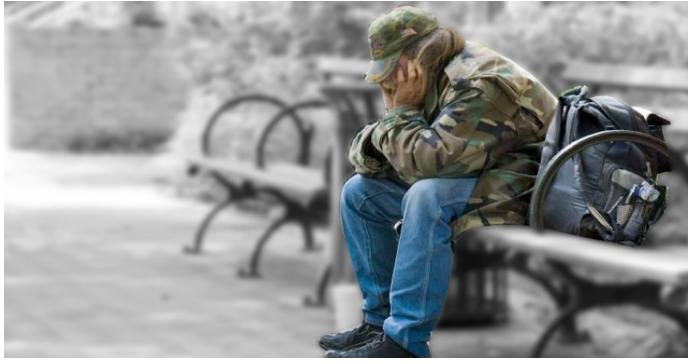
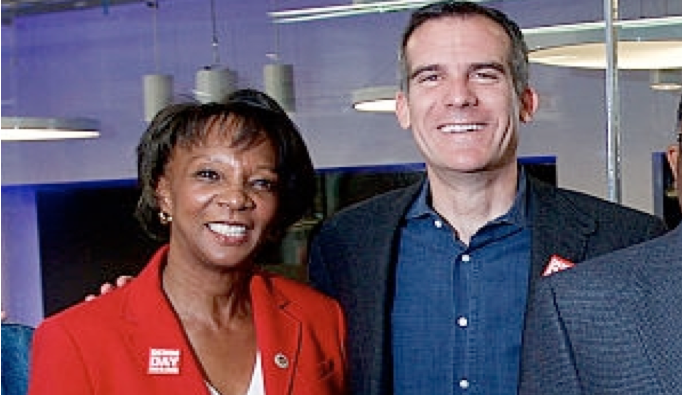




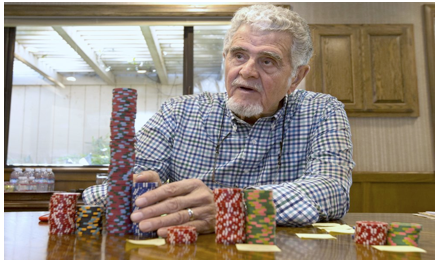
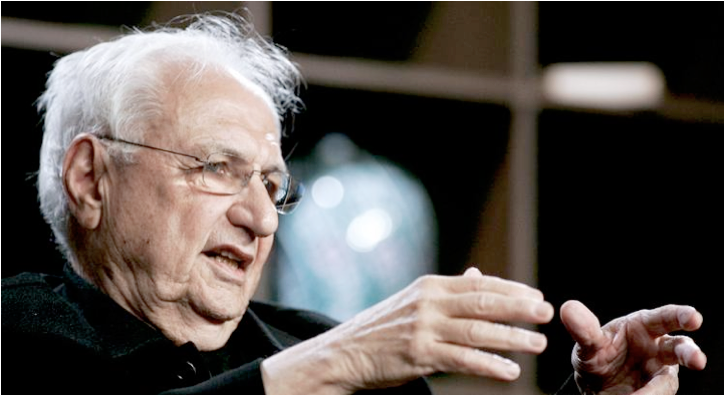
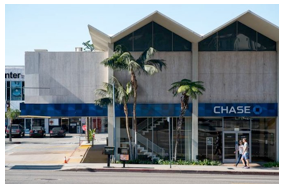 Had the PLUM Committee considered the Historic-Cultural Monument status motion before the 8150 building motion, they would have had to seriously deal with the question of what to do about the Lytton Savings Bank building (photo left). Instead, they postponed consideration of Lytton Savings Bank’s Historic-Cultural Monument status until November 22. That’s well after next week’s November 1 City Council vote on approving the 8150 Sunset project.
Had the PLUM Committee considered the Historic-Cultural Monument status motion before the 8150 building motion, they would have had to seriously deal with the question of what to do about the Lytton Savings Bank building (photo left). Instead, they postponed consideration of Lytton Savings Bank’s Historic-Cultural Monument status until November 22. That’s well after next week’s November 1 City Council vote on approving the 8150 Sunset project. 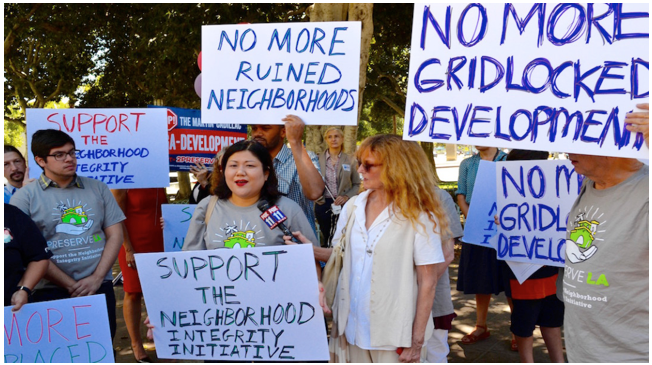
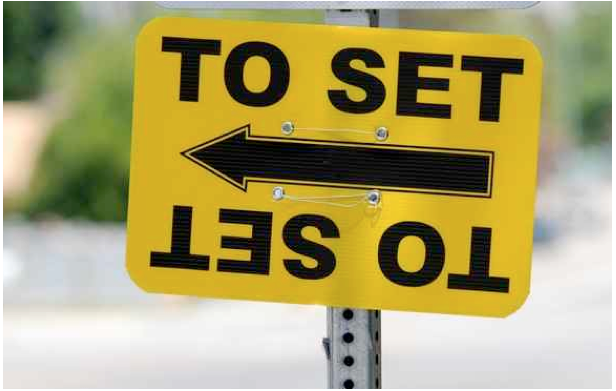
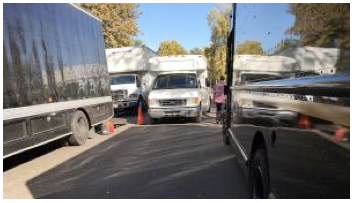 Aside from noise, difficulties backing out of driveways, lack of parking or inadequate access for emergency vehicles – concerns which can be mostly overlooked if they occurred a couple of times per year – the conversion of a residential street for commercial use on a semi-regular frequency is contrary to the right to enjoy one’s property.
Aside from noise, difficulties backing out of driveways, lack of parking or inadequate access for emergency vehicles – concerns which can be mostly overlooked if they occurred a couple of times per year – the conversion of a residential street for commercial use on a semi-regular frequency is contrary to the right to enjoy one’s property.















